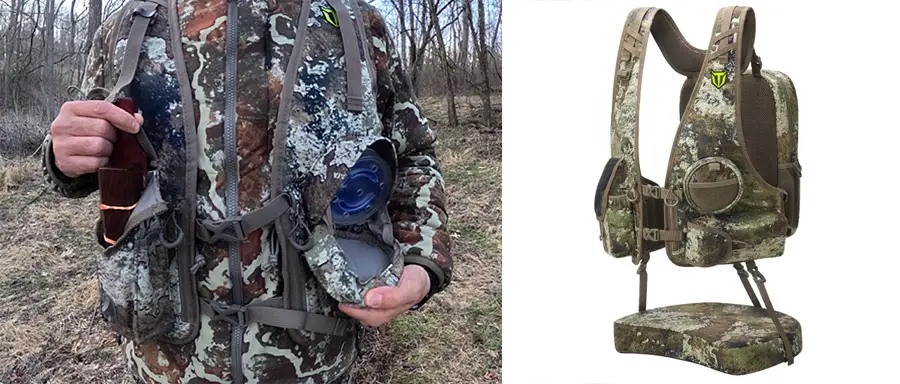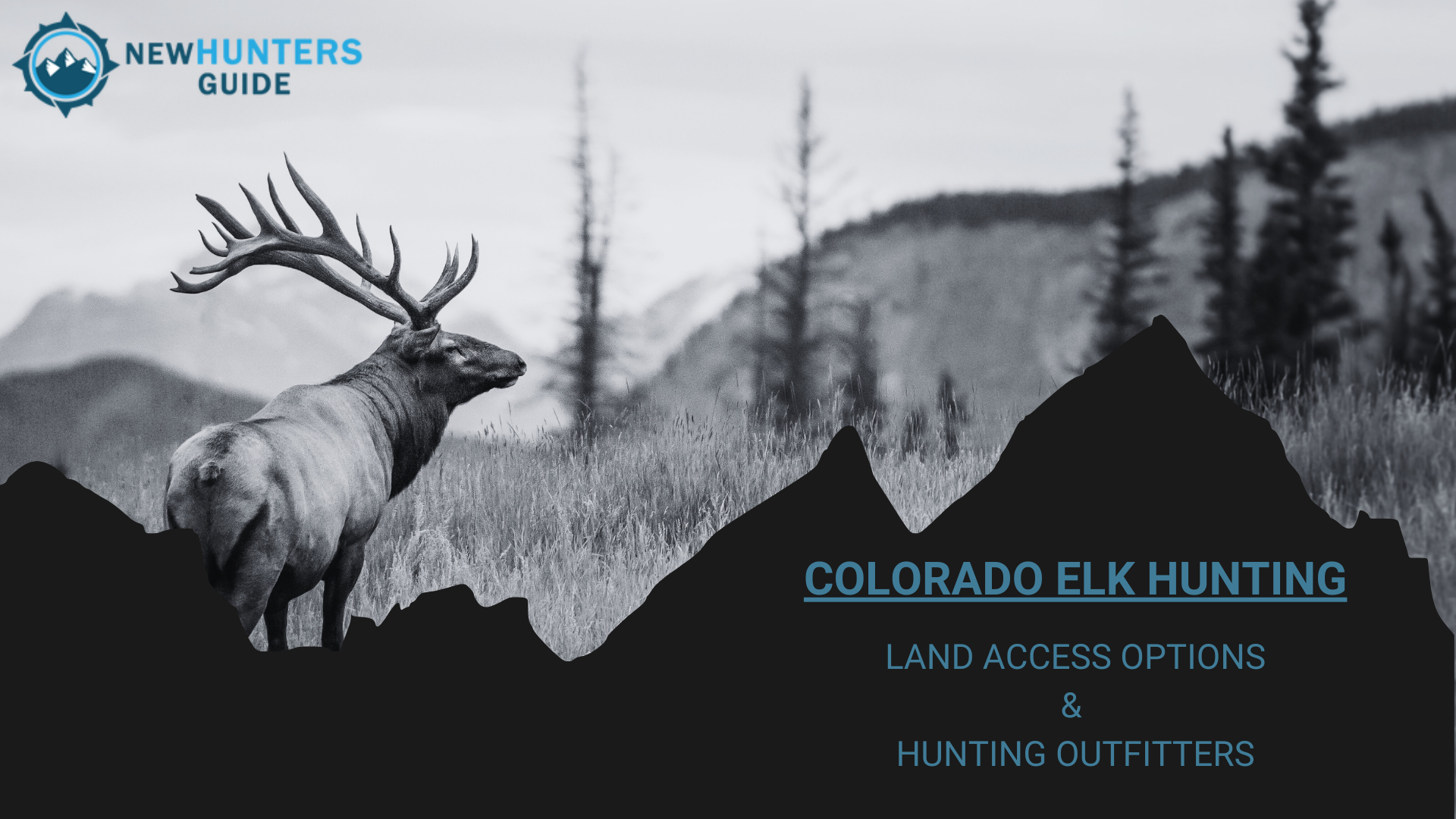Whether you bought a new gun, broke your old scope, or are just ready to upgrade, picking the right scope can make a big difference for helping you take game in the woods. On this episode I talk about how to pick the right level of magnification, durability, clarity, and field of view for your next rifle scope purchase.
There are many great ways for hunters to cook wild turkeys. Wild turkey recipes are not interchangeable with storebought turkey or chicken recipes, but with some simple modifications you can enjoy some very familiar dishes. In this episode I dig into new and fun cooking techniques and recipe ideas to help you enjoy your harvest.
Chances are, if you have hunted turkey’s, you have been lied to. You were led to believe you should optimize your choke tube and turkey ammo for long range hunting. But the average range turkeys are shot is 20-30 yards. So, working to get extremely tight patterns and high pattern density at 40-50 yards is the wrong place to focus. People are spending a lot of money on ultra tight turkey chokes to get extremely tight patterns at max range, but it ends up hurting the hunters with more missed birds. Hear the whole story on this episode!
Hunting across state lines can be much more complicated than you might think. On this episode I talk about many of the things you need to plan for to be successful, such as acquiring tags for the game you want to hunt, finding the seasons you are able to participate in, getting your gear ready, and coming up with a strategy to find your actual spot. This episode is sponsored by Midwest Gun Works, use the code NHG25 at checkout to get free shipping on your first order at www.MidwestGunWorks.com, some exclusions apply, see website for details.
Many claims are made about ported choke tubes, but what does the data say? Are they better or worse than non-ported chokes, and what should you use for turkey hunting?
You absolutely can use sub gauges for hunting turkeys, the data is clear, they are very potent tools. But the big question is “should you?” Is it the optimal thing to do? On this episode I dive into that question and look at the opinions and data impacting this debate to help you decide what is best for you.
Why do people post photos of dead animals and firearms on social media? And is it something you should do? On this episode I dig into the real reasons people post hunting photos, including the good, bad, and ugly motivations that people may have.
Disclaimer: TideWe gave me this vest to do this review, and I earn from qualifying purchases using their links and code, thanks to them for their support.
The TideWe Ultra Light Turkey Hunting Vest is a beautiful picture of simplicity for the turkey hunter. This vest weighs in at 2.97 lbs. and is still packed with features. Furthermore, this turkey vest is very cost effective. With one simple modification, it may be the best vest on the market for the money. I have tested this vest in the field, but my turkey season has not yet opened. So, I plan to come back and add any new insights gained while hunting with it.
TideWe kindly provided an 18% off discount code for my readers. Enter this 18% off discount code at checkout: GK18 for the TideWe Ultra Light Vest or most things TideWe sells. This discount is in addition to many sale prices. As of this writing, that code can get the price down to $57.40. Which is a great price for a turkey vest as durable and well-built as this one.
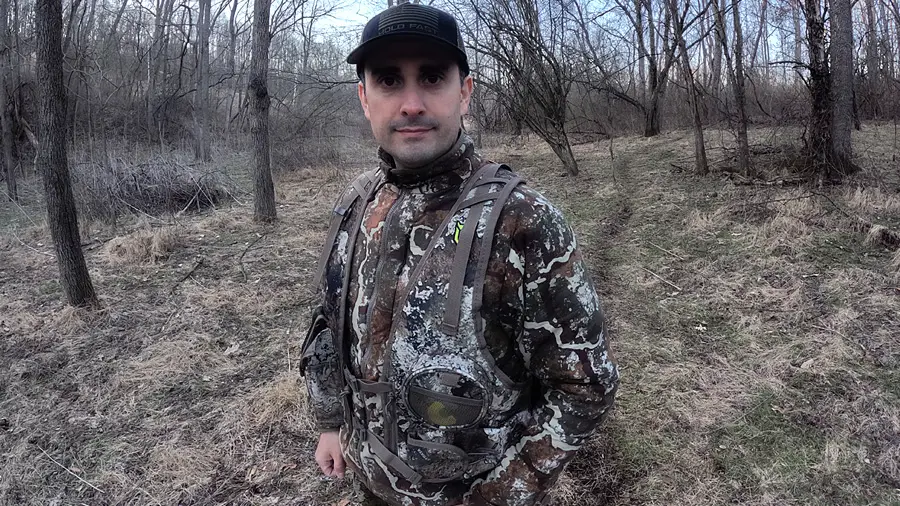
Size & Weight
This vest is not just super light, but it is compact, ergonomical, and has the pockets you really need while shedding the ones you don’t. This vest is well suited for covering lots of terrain when you need to hike for miles or are running and gunning on big land. It is fairly nimble, and it makes it easier to slip through the woods and brush than other full size and full weight vests. It gets caught on less stuff as well.
Features
My absolute favorite part of this turkey vest is the magnetic slate call pockets, which snuggly and quietly keeps your call handy while enabling very easy access, even in low light conditions. There are also other pockets for your box calls, mouth calls, and strikers. Don’t get me wrong, it does not have an abundance of pocket space, but it is sufficient for most hunts. In total it has 12 pockets, including some storage on the back that you can use for your lunch or a hydration bladder. It also has an external water bottle pocket.
The vest has a breathable mesh back to help keep you dry and a very comfortable seat that folds up to a magnetic attachment point so it can be quickly stowed and deployed without needing to disconnect any straps. The seat has a water-resistant bottom as well to help keep you dry even on wet days. The vest also has 11 adjustment points to help it fit comfortably.

The TideWe Ultra Light Turkey Vest is also surprisingly durable. The material, straps, zippers, and connection points all feel very strong. It will take me a few years of hunting to really know how well it holds up over time but as of right now I am impressed. For being so light, the vest feels very strong. And it comes in multiple colors, which is a plus.
Cons
There are a few things about this vest that are less than ideal. Only one of which is of significance, and it can be fixed. First, there is not a perfect pocket for your strikers, there is a pocket that works, but I’d rather have a dedicated striker pocket. Second, there are not ideal storage options in the front for extra shells. There are a couple pockets that could work, but I prefer my pants pockets over those. But I am knit picking at this point.
The only con of significance is the magnet that holds the seat to the vest. It is a little weak. I noticed it popping off too easily. The fix on this is easy though and you can add on a stronger neodymium magnet to the back of the vest that will hold the seat very snug. You don’t have to do this of course; the vest works as is. But if you want to tighten it up so the seat is held more secure, this would be a simple cost-effective way to do it. I haven’t done it yet, but I am planning to, I got the idea from someone who watched my review video.
Ideal Circumstances
Keep in mind, this turkey hunting vest despite any cons, does exceptionally well under specific circumstances. When you want a light compact vest to cover ground and not be weighed down or hindered by bulk, this is exactly the kind of vest you want. Under those circumstances every pound can make a big difference by the end of the day. When you want to go light, this vest is a good tool.
Conclusion and Recommendations.
I think this is a great turkey vest for beginners and turkey hunters at all levels. You get a lot of quality and features for the price. Even if you are just looking for a good cheap vest and are not worried about covering a lot of ground, this is a good all-around option. And do not forget to use the 18% off discount code at checkout: GK18 for the TideWe Ultra Light Turkey Vest.
Be sure to listen to The New Hunters Guide Podcast and check us out on YouTube.
Till next time. God bless you, and go get em in the woods!
George Konetes Ph.D. – Founder and Host of the New Hunters Guide.
The New Hunters Guide is simply what George wishes he would have had when learning how to hunt; a single place to get practical hands on knowledge about different kinds of hunting, gear, strategy, and tips that can improve your comfort and fun factor in the woods.
As a note, TideWe gave me this vest to do this review, and I earn from qualifying purchases using their links and code, thanks to them for their support.
Of all the errors that turkey hunters can make, there is one that spoils more hunts than any other. If you can fix this one thing, you can drastically improve your effectiveness in the turkey woods.
This article is sponsored by Western Outdoor Adventures.
If you were to sit down and have a drink with any big-time hunter from Colorado to discuss the best game the state has to offer, chances are that you’ll find elk at the top of just about every list.
This is due to the fact that Colorado is home to the largest elk population in North America, with a herd estimated at over 280,000 elk strong.
So, whether you’re a new, first-time hunter or a thoroughly experienced sportsman, if you are looking to hunt elk, Colorado is your best bet.
1. Public Land Elk Hunting
To start us off, public land hunting is the most basic route you can take to hunt elk in Colorado.
The state of Colorado has over 22 million acres of public hunting land, all of which include National Forests, BLM land, and state trust lands.
Public land hunting is a very popular option for those who prefer a more solo hunting approach without the aid of a guide or landowner but be prepared to wait for a tag, especially if you are out of state.
First, here are a few things to consider about public land:
- Hunters must obtain a Colorado elk hunting license and follow all GMU-specific rules.
- Public land hunters see an average success rate of 10-20%, meaning public hunters must have realistic expectations.
Where are Colorado’s Public Elk Hotspots?
Below you’ll find some of the “best bets” for Colorado public land options:
Flat Tops Wilderness (GMUs 12, 23, 24)
A popular option for elk hunting due to the area’s large population.
San Juan National Forest (GMUs 74, 75)
Located in southwestern Colorado, San Juan is another popular area.
White River National Forest (GMU 11, 22)
Another region popular for holding one of the largest elk herds in North America.
Weapon Restrictions
Public land does come with its restrictions:
Archery
Only recurve, compound, or longbows are permitted. Crossbows are prohibited unless medically permitted.
Muzzleloader
Minimum .50 caliber, no pelletized powder or scopes allowed.
Rifle
Minimum .24 caliber with legal centerfire rounds.
Colorado Elk Season Dates (2025)
- Archery: September 2–30
- Muzzleloader: September 13–21
- 1st Rifle: October 15–19 (draw only)
- 2nd Rifle: October 25–November 2 (OTC available)
- 3rd Rifle: November 8–16 (OTC available)
- 4th Rifle: November 19–23 (draw only)
Hunter Safety
- 500 square inches of hunter orange required during rifle seasons.
- GPS navigation is highly recommended for tracking and avoiding trespassing, especially for new elk hunters.
2. Private Land Elk Hunting
Elk hunting on private land is another popular option due to much higher success rates, all thanks to the lower hunting pressure on private land and generally improved habitat management.
Many landowners offer access hunting via paid trespass fees, guided hunts, or landowner preference vouchers.
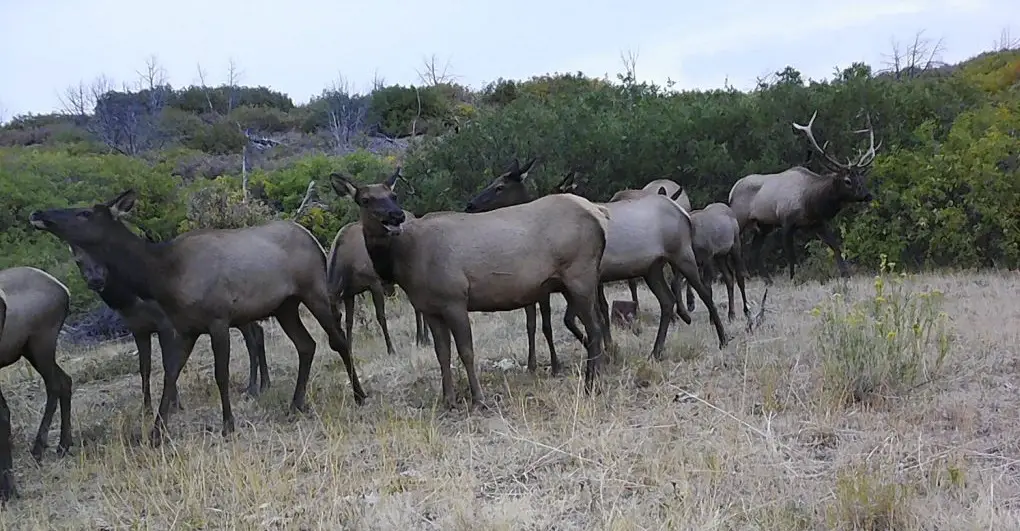
Hunting Access
- Requires permission or a Landowner Preference Voucher to hunt legally.
- Some landowners do offer a trespass fee for DIY hunters.
- Fully guided hunts on private land are also popular among those looking for structured experiences.
What are the Advantages of Private Land Elk Hunts?
Limited Hunting Pressure
Fewer hunters lead to more natural elk behavior, resulting in higher success rates.
Higher Success Rates
As mentioned, private land success rates are far higher, often ranging from 40-70%.
Trophy Quality
Well-managed lands support mature bulls with superior genetics, and fewer yearly hunters allow for larger deer.
How Much do Colorado Private Land Elk Hunts Costs?
As we mentioned earlier, hunting private land has its benefits, and its costs:
Trespass Fees
Range from $500 to $3,000 for base-level access.
Fully Guided Hunts
Costs range from $5,000–$10,000+.
Landowner Vouchers
Vouchers can purchased at market value or higher from private landowners.
3. Special Land Access Programs
Beyond public and private offerings, Colorado puts forth some unique programs to further improve hunting access on private lands.
Two of the most important are Ranching for Wildlife (RFW) and Walk-In Access (WIA).
Ranching for Wildlife (RFW)
- Extended hunting seasons, including rifle hunts during the rut.
- High success rates exceeding 70%.
- Public hunters drawn for RFW tags do not pay additional access fees beyond the license cost.
Walk-In Access (WIA)
- Hunters with a valid license have access to enrolled private lands with no need for direct permission.
- Access is for foot traffic only, no ATVs or motorized vehicles are permitted.
- The list of properties changes annually, so make sure to check the WIA atlas before the season.
4. Outfitted and Guided Elk Hunts
The fourth and final option we will cover is the most comprehensive COlorado hunting experience you can get, a guided hunt with an outfitter.
For hunters looking to maximize their chances of bringing home a trophy elk, guided hunts are by far the best bet.
Hunting outfitters offer top-level expert assistance and logistical support, as well as lodging and entertainment in some cases.
There are a couple of different ways that Colorado elk hunting outfitters can operate, on both public and private land, as well as offering fully guided, semi-guided, or drop-camp hunts.
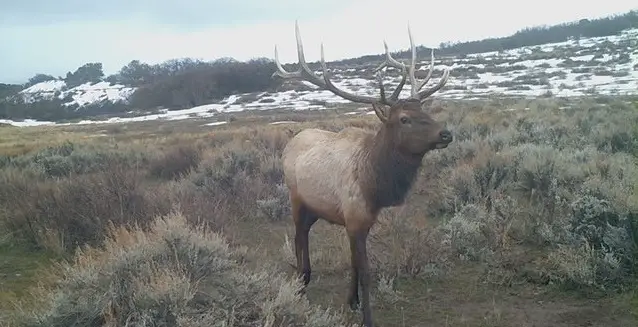
Types of Guided Hunts
When it comes to outfitter hunts, there are a couple of different routes:
Fully Guided
This is a top-of-the-line experience, including a professional hunter guide, lodging, meals, field dressing, and even entertainment accommodations.
Semi-Guided
Less comprehensive than a fully guided trip, semi-guided hunts provide lodging and access to prime locations but allow hunters more independence out in the field.
Drop Camps
The most cost-effective of the three, drop camps are where outfitters provide hunters with remote camp access to the same prime hunting land with basic amenities, but no direct guiding.
Costs
Similar to private land, the better the hunt, the higher the cost:
Fully Guided Hunts: Range from $5,000–$10,000+.
Semi-Guided Hunts: Typical costs fall between $3,500–$6,500.
Drop Camps: Range from $2,000–$4,000 per hunter.
Hunting outfitters are an amazing option when you have a large party looking for a more thorough, comprehensive hunting experience.
5. Over-the-Counter vs. Draw Tags
Colorado’s elk license system consists of limited draw tags and over-the-counter (OTC) licenses.
Limited Draw Licenses
- Required for premium GMUs, with some areas taking 10+ preference points.
- Non-residents are capped at 35% of available licenses.
- Application deadline is April 2, 2024
Over-the-Counter (OTC) Licenses
- Available for archery (either-sex) and 2nd & 3rd rifle season bull elk in specific GMUs.
- OTC availability varies by unit.
2025 Changes to OTC Archery Licenses
- Starting in 2025, non-residents pursuing archery elk tags must enter the draw.
- Residents will still have OTC options in designated GMUs.
- Leftover and secondary draw licenses become available in June and August.
Colorado offers diverse elk hunting opportunities, whether you prefer DIY public land hunts, private land access, or guided adventures. With a vast elk population and a variety of hunting methods available, planning ahead is crucial for success. Understanding licensing, regulations, and access programs ensures a smoother hunting experience.
For up-to-date regulations and application details, visit Colorado Parks & Wildlife.
Western Outdoor Adventures is proud to offer you, some of the best Colorado Elk Hunts in GMU Units 11,33,42, 421 & 52 for Archery, Muzzleloader, & Rifle seasons.
Northwest Colorado is famous for one of the largest herds of elk in North America. All our elk hunts are fair chase only. Our Elk Hunting Areas from deep in the timber to our private land, we try to provide you with superb big game hunting opportunities.
This article and its images were written and provided by the great folks at Western Outdoor Adventures.

